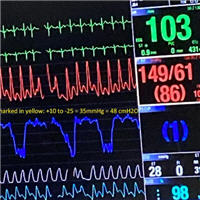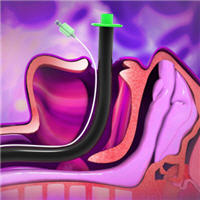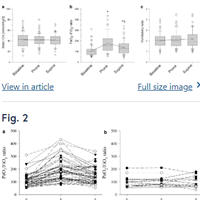Tag: intubation

Assess the Intensity of Inspiratory Efforts Using CVP Waveforms
Real case: You are passing by the room of an awake mechanically ventilated patient with advanced IPF. Peeking in from outside the room, the following CVP waveform catches your attention. In a recent post, we discussed... read more

Comparison of the Efficacy and Safety of Cuffed vs. Uncuffed Endotracheal Tubes for Infants in the Intensive Care
There was no difference in the primary outcome, though percentage time spent in optimal leak range was significantly higher in cuffed uncuffed endotracheal tube (ETT) group. Cuffed ETTs reduced reintubations to optimise ETT... read more

Association of Low Baseline Diaphragm Muscle Mass With Prolonged Mechanical Ventilation and Mortality Among Critically Ill Adults
In this study, low baseline diaphragm muscle mass in critically ill patients was associated with prolonged mechanical ventilation, complications of acute respiratory failure, and an increased risk of death in the hospital. A... read more

Relationship Between Skeletal Muscle Area and Density and Clinical Outcome in Adults Receiving VV-ECMO
Low skeletal muscle index at the commencement of venovenous extracorporeal membrane oxygenation (VV-ECMO) was associated with a longer duration of venovenous extracorporeal membrane oxygenation, whereas preserved skeletal... read more

Clinical Features and Predictors in Critically Ill COVID-19 Patients
We aim to describe a case series of critically and non-critically ill COVID-19 patients in Singapore. This was a multicentered prospective study with clinical and laboratory details. Details for fifty uncomplicated COVID-19... read more

COVID-19: Critical Care and Airway Management Issues
Among patients hospitalized with coronavirus disease 2019 (COVID-19), up to one-quarter require intensive care unit (ICU) admission. Profound hypoxemic respiratory failure from acute respiratory distress syndrome (ARDS)... read more

Prone Position in Intubated, Mechanically Ventilated COVID-19 Patients
During the COVID-19 pandemic, prone position has been widely adopted to treat mechanically ventilated patients with respiratory failure. The majority of patients improved their oxygenation during prone position, most likely... read more

Effect of intubation timing on clinical outcomes of critically ill patients with COVID-19
The synthesized evidence suggests that timing of intubation may have no effect on mortality and morbidity of critically ill patients with COVID-19. These results might justify a wait-and-see approach, which may lead to fewer... read more

24-Hour Esophageal pH Measurement in Mechanically Ventilated Children
The current study shows high incidence of gastroesophageal reflux on 24-hour esophageal pH-metry in mechanically ventilated children with medical diagnoses. The significance of this finding and its impact on ventilator-associated... read more

A Bad Sedation Package Leaves your Patient Trapped in a Nightmare
Pushing some ativan followed by vecuronium is no longer an acceptable strategy to manage post-intubation sedation. A good analgesia and sedation package is essential if you care about your patient's comfort and well-being.... read more

Practice Recommendations on Neuraxial Anesthesia and Peripheral Nerve Blocks during the COVID-19 Pandemic
General anesthesia (GA) with airway intervention leads to aerosol generation, which exposes the health care team to risk of transmission of COVID-19 both during intubation and extubation. The odds of transmission of acute... read more

Effect of Helmet Noninvasive Ventilation vs. High-Flow Nasal Oxygen in Patients with COVID-19
Among patients with COVID-19 and moderate to severe hypoxemia, treatment with helmet noninvasive ventilation, compared with high-flow nasal oxygen, resulted in no significant difference in the number of days free of respiratory... read more

Intubation Practices and Adverse Peri-intubation Events in Critically Ill Patients
In this observational study of intubation practices in critically ill patients from a convenience sample of 197 sites across 29 countries, major adverse peri-intubation events—in particular cardiovascular instability—were... read more

International Variation in Intubation and Extubation Practices Among Critically Ill Patients Receiving Mechanical Ventilation
Requiring invasive mechanical ventilation acutely outside an operating room is, for many, the definition of critical illness. Although there may be debate regarding whether patients treated with noninvasive ventilation or... read more








